The Luxury of Intervened Memory
This archive is a system of intervened memory — a space of aesthetic resistance, a fragmented body of documents and visual gestures that defy the limits of institutional legibility.
Here, memory is activated under high tension: what was erased becomes central, what was illegible becomes readable, and what was silenced finally takes shape.
All of it contained — paradoxically and deliberately — in a recycled luxury box turned artistic urn. Because here, luxury is not a symbol of power, but a conceptual device. Like art, this archive reclaims the symbols of privilege to expose structural exclusion. In this game of contrasts, the box becomes a container of marginality, an elite display case for unauthorized truths.
The images presented here are intervened relics. Every censorship mark, every annotation, every visual fold is a critical gesture that speaks through excess and overflow. Against the cold logic of traditional archives, this one offers discomfort. It is both an aesthetic and ethical experience.
Luxury is not found in the object, but in the gaze: a gaze that dares to embrace the unresolved and finds beauty in what does not fit.
This archive has been shared as a case study in technological ethics classes — anonymized yet alive. The luxury box passes from hand to hand, the archive unfolds, and the classroom becomes a laboratory of critical memory.
A student once said:
“This only happens once in a lifetime.”
And she was right. Not because of its rarity,
but because sometimes, art and life collide with such intensity
that the system simply cannot absorb it without breaking.
- Joel De las Heras
Now Playing on Spotify
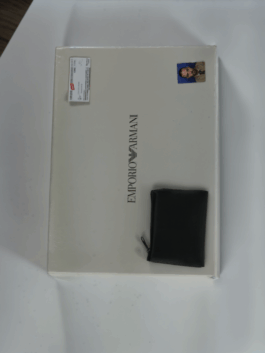
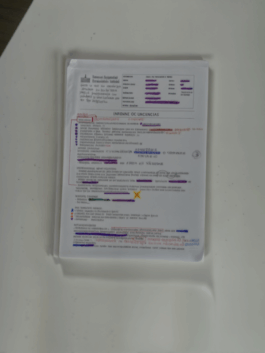

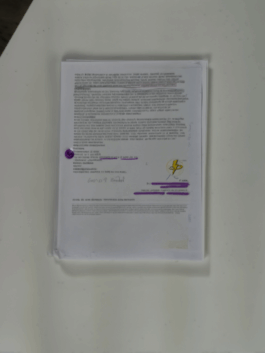
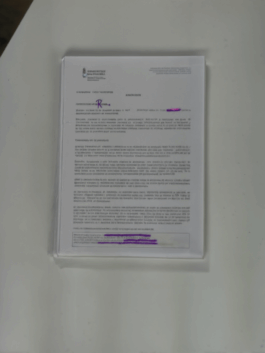
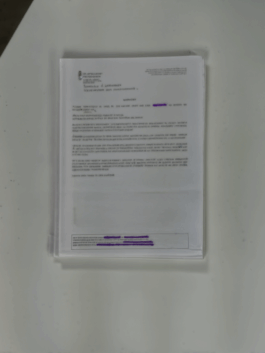
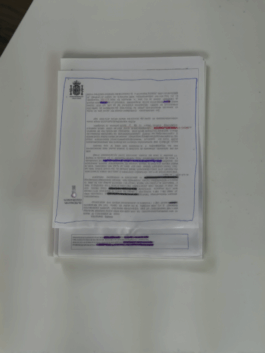
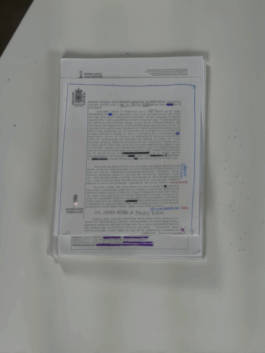
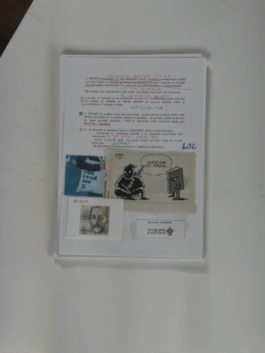
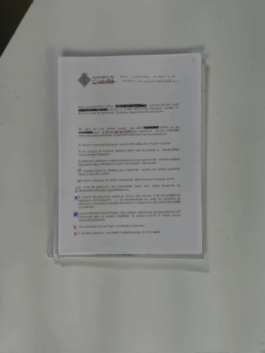
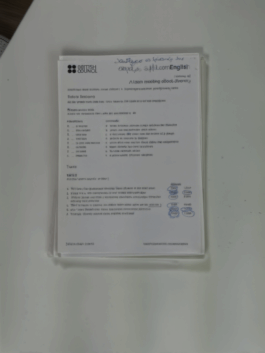
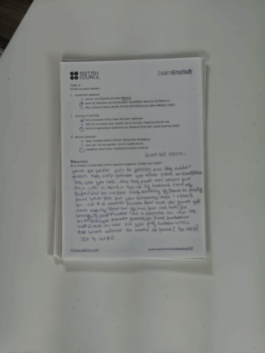

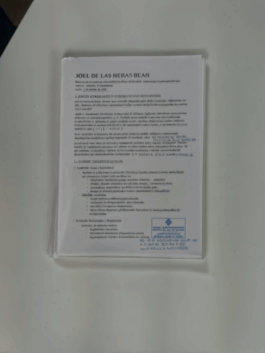
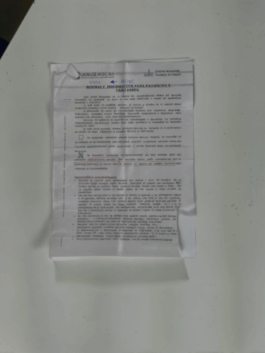

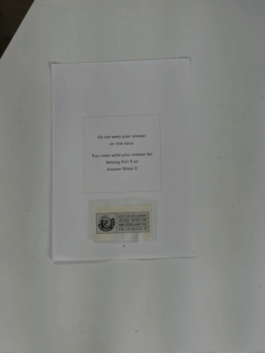
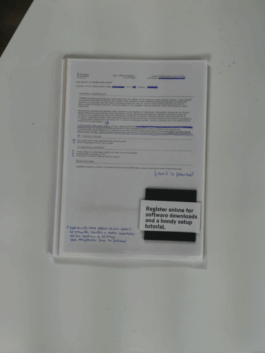
A "Social War" in the Valencian Community? This is what insiders reveal
The archive, published from within the system itself, sheds light on a silenced crisis exposing the programmed exclusion at the heart of the Valencian welfare structure. Vulnerable people with no way out. This, too, is a form of war.
Amid the growing rhetoric around institutional well-being, an investigation born on the margins brings to light the reality of structural exclusion. Based on the documented monitoring of vulnerable individuals, the piece interweaves testimonies, official data, and observations collected from within the system.
This text offers a rigorous, reflective denunciation—artistic, ethical, technological, and social—regarding the state of social housing, mental health care, and the mechanisms of symbolic disappearance within the public support networks of the Valencian Community. The report includes verified observations contextualized in the first quarter of 2025 and is accompanied by a parallel archive of critical and artistic documentation that evidences this reality.
Castellón: The gentle city that abandons in silence
From the outside, Castellón seems like a compact, modern city with accessible services and an articulated institutional network. A coastal city offering calm, beach life, and a vibrant cultural-musical scene in summer. But from within, there are routes not shown on Google Maps: journeys between counters, nights in shelters, referrals with no return, and doors that open only to close another.
In 2025, an invisible part of the city remains silent: people with recognized disabilities, patients in mental health treatment, migrants, youth without family support, individuals in situations of semi-slavery or structural housing exclusion. These are not statistics—they are stories. Each one has been documented through ethical accompaniment, direct observation, and the use of AI-based technologies—not for control, but as tools of narrative autonomy and testimonial reconstruction.
55,000 applications. 1% public housing. Frozen lives
With more than 55,000 active social housing applications in the Valencian Community (over 5,000 in Castellón province), the housing crisis has surpassed any political discourse. While market prices remain unaffordable, public housing barely represents 1% of the total stock—a figure far below the European average.
In 2025, new funds were announced for acquiring social housing and restoring public housing infrastructure. Yet, the contrast with the scale of the emergency is stark. The number of homes added to the public stock remains symbolic compared to the real demand.
Delays in implementation are compounded by the suspension of essential projects and the partial loss of structural funds. Most housing units included in regional plans remain unexecuted. Meanwhile, lives remain paralyzed and without guarantees.
Diagnoses without strategy. Admissions without continuity. Patients without a future
Exclusion is not only about housing—it’s also systemic in care. It manifests in diagnoses unaccompanied by plans, admissions lacking continuity, and proposals arriving only once the damage is irreversible.
Therapeutic follow-up in the documented cases has often been limited to pharmacological prescriptions, without psychosocial intervention plans or the application of specialized protocols for complex trauma, exclusion risk, or structural violence.
Omissions in reports, restricted access to personal records, administrative delays, and the use of legal mechanisms without adequate safeguards have all been documented. This pattern endangers fundamental rights related to autonomy, informed consent, and continued care.
TESTIMONY REGISTRY: The archive as counter-document
During an extended stay in a municipal emergency shelter, multiple real cases of rights violations were recorded. Names have been changed to respect privacy and prevent revictimization.
- J. is recovering from drug dependency and currently sleeps in a medical facility after living on the streets. Although receiving care, he was denied access to visitation protocols at the center where he tried to enter treatment. No explicit refusal—just an insurmountable distance.
- A. Ruiz, diagnosed with multiple sclerosis and a 67% recognized disability, survives in a temporary facility without guarantees. The disability benefit he’s entitled to remains inactive. His situation reflects a bureaucracy that delays the urgent.
- F. Medina, in a wheelchair, navigates non-adapted corridors with the help of other users. His daily life is an act of resistance against structural neglect.
- Nour, a Muslim woman diagnosed with depression, lives in a constant atmosphere of harassment by other residents. The facility's management has proven unable to intervene effectively for weeks.
- S. Lázár, a young woman from Eastern Europe, searches for meaning between spirituality and broken ties. She was recently forced to sleep on the street. Her whereabouts are currently unknown.
- M., a young person with bipolar disorder recently freed from a semi-slavery situation, found in language and AI a tool for reconstruction. The system sees him not as an agent, but as a recipient.
- Juan, who experiences intermittent mental health episodes, went through a judicial process. Another user with the same diagnosis received medical treatment. Two parallel paths, same outcome: exclusion, waiting, and a return to the starting point.
- Il Signore, an Italian man invisible to the administration, was deeply visible to fellow shelter residents. His sadness was interrupted by a simple ritual: an Italian song, an orange lighter, a direct gaze.
- B. and O., young men from West Africa excluded due to language barriers, asked to learn Spanish. They received a self-taught introduction to AI. A small, unassuming act of resistance.
- One more case refers to a person with no official name in reports, awaiting a stable and adapted place. This person uses AI to build an archive from within—not as a tech novelty but as a tool to name what doesn’t fit in forms. Memory, in this case, has been rebuilt from the margins of programmed exclusion.
Archiving through technology as defense: AI as memory prosthesis
Faced with structural invisibility, artificial intelligence has helped patients reconstruct their stories in the form of an archive. Not to predict or automate processes, but to narrate, systematize, and preserve.
This work emerges as a form of assisted auto-ethnography. The algorithms used did not invade privacy—they were trained with narrative language, voluntary testimonies, and personal documents. Here, AI functions not as control, but as a prosthesis of memory.
An act of aesthetic resistance and evidence that cannot be archived without being heard
It does not surveil. It does not automate. Here, AI serves to tell the stories the system wants to forget. This report is part of the project Intervened Memory Archive, a documentary, ethical, and artistic piece presented as an expanded object: a recycled luxury box composed of testimonies, censored stories, images, and documentary traces of structural abandonment.
The work has been shared in clinical, educational, museum, and academic settings. A censored version is available in its digital space, under principles of care ethics.
A political act of resistance: the hidden reality, told here. With body, against the system, and narrated through art
This investigative report is a legitimate act of narrative defense. It does not intend to replace legal processes or interfere in ongoing investigations—but it bears witness to lived, real, and verified facts.
National and European legislation protects not only judicial truth but also the right to narrate lived experience—when done with respect, documentation, and ethical awareness.
“What the system erases must be archived. Because if it’s not told, it disappears.”
All information collected is protected under the right to freedom of expression and artistic creation. No identifiable professionals, centers, or public officials are named, ensuring the author's legal protection within the framework of an open investigation. The document has been written with truthfulness, ethics, rigor, and respect for privacy, as part of a critical memory and testimonial archive.
Joel De las Heras Bean is an artist, educator, creative, and transmedia storyteller. He combines art, technology, and critical memory to make invisible realities visible. His current research weaves together archive, pedagogy, and creation as acts of narrative and political resistance.
The Luxury of Intervened Memory
This archive is a system of intervened memory — a space of aesthetic resistance, a fragmented body of documents and visual gestures that defy the limits of institutional legibility.
Here, memory is activated under high tension: what was erased becomes central, what was illegible becomes readable, and what was silenced finally takes shape.
All of it contained — paradoxically and deliberately — in a recycled luxury box turned artistic urn. Because here, luxury is not a symbol of power, but a conceptual device. Like art, this archive reclaims the symbols of privilege to expose structural exclusion. In this game of contrasts, the box becomes a container of marginality, an elite display case for unauthorized truths.
The images presented here are intervened relics. Every censorship mark, every annotation, every visual fold is a critical gesture that speaks through excess and overflow. Against the cold logic of traditional archives, this one offers discomfort. It is both an aesthetic and ethical experience.
Luxury is not found in the object, but in the gaze: a gaze that dares to embrace the unresolved and finds beauty in what does not fit.
This archive has been shared as a case study in technological ethics classes — anonymized yet alive. The luxury box passes from hand to hand, the archive unfolds, and the classroom becomes a laboratory of critical memory.
A student once said:
“This only happens once in a lifetime.”
And she was right. Not because of its rarity,
but because sometimes, art and life collide with such intensity
that the system simply cannot absorb it without breaking.
- Joel De las Heras


















Now Playing on Spotify
A "Social War" in the Valencian Community? This is what insiders reveal
The archive, published from within the system itself, sheds light on a silenced crisis exposing the programmed exclusion at the heart of the Valencian welfare structure. Vulnerable people with no way out. This, too, is a form of war.
Amid the growing rhetoric around institutional well-being, an investigation born on the margins brings to light the reality of structural exclusion. Based on the documented monitoring of vulnerable individuals, the piece interweaves testimonies, official data, and observations collected from within the system.
This text offers a rigorous, reflective denunciation—artistic, ethical, technological, and social—regarding the state of social housing, mental health care, and the mechanisms of symbolic disappearance within the public support networks of the Valencian Community. The report includes verified observations contextualized in the first quarter of 2025 and is accompanied by a parallel archive of critical and artistic documentation that evidences this reality.
Castellón: The gentle city that abandons in silence
From the outside, Castellón seems like a compact, modern city with accessible services and an articulated institutional network. A coastal city offering calm, beach life, and a vibrant cultural-musical scene in summer. But from within, there are routes not shown on Google Maps: journeys between counters, nights in shelters, referrals with no return, and doors that open only to close another.
In 2025, an invisible part of the city remains silent: people with recognized disabilities, patients in mental health treatment, migrants, youth without family support, individuals in situations of semi-slavery or structural housing exclusion. These are not statistics—they are stories. Each one has been documented through ethical accompaniment, direct observation, and the use of AI-based technologies—not for control, but as tools of narrative autonomy and testimonial reconstruction.
55,000 applications. 1% public housing. Frozen lives
With more than 55,000 active social housing applications in the Valencian Community (over 5,000 in Castellón province), the housing crisis has surpassed any political discourse. While market prices remain unaffordable, public housing barely represents 1% of the total stock—a figure far below the European average.
In 2025, new funds were announced for acquiring social housing and restoring public housing infrastructure. Yet, the contrast with the scale of the emergency is stark. The number of homes added to the public stock remains symbolic compared to the real demand.
Delays in implementation are compounded by the suspension of essential projects and the partial loss of structural funds. Most housing units included in regional plans remain unexecuted. Meanwhile, lives remain paralyzed and without guarantees.
Diagnoses without strategy. Admissions without continuity. Patients without a future
Exclusion is not only about housing—it’s also systemic in care. It manifests in diagnoses unaccompanied by plans, admissions lacking continuity, and proposals arriving only once the damage is irreversible.
Therapeutic follow-up in the documented cases has often been limited to pharmacological prescriptions, without psychosocial intervention plans or the application of specialized protocols for complex trauma, exclusion risk, or structural violence.
Omissions in reports, restricted access to personal records, administrative delays, and the use of legal mechanisms without adequate safeguards have all been documented. This pattern endangers fundamental rights related to autonomy, informed consent, and continued care.
TESTIMONY REGISTRY: The archive as counter-document
During an extended stay in a municipal emergency shelter, multiple real cases of rights violations were recorded. Names have been changed to respect privacy and prevent revictimization.
- J. is recovering from drug dependency and currently sleeps in a medical facility after living on the streets. Although receiving care, he was denied access to visitation protocols at the center where he tried to enter treatment. No explicit refusal—just an insurmountable distance.
- A. Ruiz, diagnosed with multiple sclerosis and a 67% recognized disability, survives in a temporary facility without guarantees. The disability benefit he’s entitled to remains inactive. His situation reflects a bureaucracy that delays the urgent.
- F. Medina, in a wheelchair, navigates non-adapted corridors with the help of other users. His daily life is an act of resistance against structural neglect.
- Nour, a Muslim woman diagnosed with depression, lives in a constant atmosphere of harassment by other residents. The facility's management has proven unable to intervene effectively for weeks.
- S. Lázár, a young woman from Eastern Europe, searches for meaning between spirituality and broken ties. She was recently forced to sleep on the street. Her whereabouts are currently unknown.
- M., a young person with bipolar disorder recently freed from a semi-slavery situation, found in language and AI a tool for reconstruction. The system sees him not as an agent, but as a recipient.
- Juan, who experiences intermittent mental health episodes, went through a judicial process. Another user with the same diagnosis received medical treatment. Two parallel paths, same outcome: exclusion, waiting, and a return to the starting point.
- Il Signore, an Italian man invisible to the administration, was deeply visible to fellow shelter residents. His sadness was interrupted by a simple ritual: an Italian song, an orange lighter, a direct gaze.
- B. and O., young men from West Africa excluded due to language barriers, asked to learn Spanish. They received a self-taught introduction to AI. A small, unassuming act of resistance.
- One more case refers to a person with no official name in reports, awaiting a stable and adapted place. This person uses AI to build an archive from within—not as a tech novelty but as a tool to name what doesn’t fit in forms. Memory, in this case, has been rebuilt from the margins of programmed exclusion.
Archiving through technology as defense: AI as memory prosthesis
Faced with structural invisibility, artificial intelligence has helped patients reconstruct their stories in the form of an archive. Not to predict or automate processes, but to narrate, systematize, and preserve.
This work emerges as a form of assisted auto-ethnography. The algorithms used did not invade privacy—they were trained with narrative language, voluntary testimonies, and personal documents. Here, AI functions not as control, but as a prosthesis of memory.
An act of aesthetic resistance and evidence that cannot be archived without being heard
It does not surveil. It does not automate. Here, AI serves to tell the stories the system wants to forget. This report is part of the project Intervened Memory Archive, a documentary, ethical, and artistic piece presented as an expanded object: a recycled luxury box composed of testimonies, censored stories, images, and documentary traces of structural abandonment.
The work has been shared in clinical, educational, museum, and academic settings. A censored version is available in its digital space, under principles of care ethics.
A political act of resistance: the hidden reality, told here. With body, against the system, and narrated through art
This investigative report is a legitimate act of narrative defense. It does not intend to replace legal processes or interfere in ongoing investigations—but it bears witness to lived, real, and verified facts.
National and European legislation protects not only judicial truth but also the right to narrate lived experience—when done with respect, documentation, and ethical awareness.
“What the system erases must be archived. Because if it’s not told, it disappears.”
All information collected is protected under the right to freedom of expression and artistic creation. No identifiable professionals, centers, or public officials are named, ensuring the author's legal protection within the framework of an open investigation. The document has been written with truthfulness, ethics, rigor, and respect for privacy, as part of a critical memory and testimonial archive.
Joel De las Heras Bean is an artist, educator, creative, and transmedia storyteller. He combines art, technology, and critical memory to make invisible realities visible. His current research weaves together archive, pedagogy, and creation as acts of narrative and political resistance.
This website collects no data, stores no cookies, and tracks no behavior. It exists solely as a space for free expression, memory, and poetic justice — free from ads, algorithms, or commercial intent. What you read here is not a product, but a counter-document: a testimony against institutional neglect, a space where stories erased by the system reclaim their voice. All content is protected by the right to freedom of expression and artistic creation under national and European law. The system erases. We archive.
This website collects no data, stores no cookies, and tracks no behavior. It exists solely as a space for free expression, memory, and poetic justice — free from ads, algorithms, or commercial intent. What you read here is not a product, but a counter-document: a testimony against institutional neglect, a space where stories erased by the system reclaim their voice. All content is protected by the right to freedom of expression and artistic creation under national and European law. The system erases. We archive.